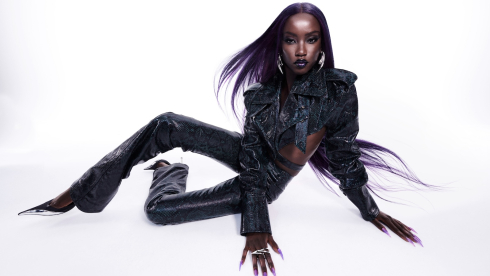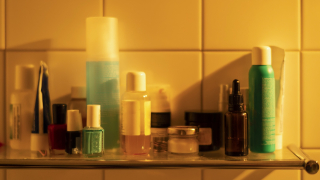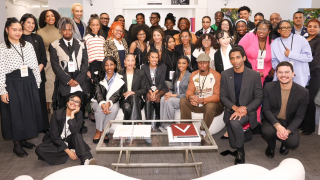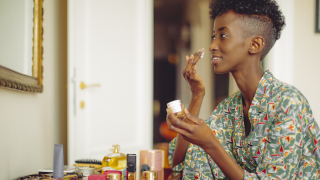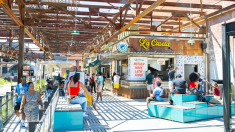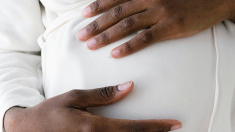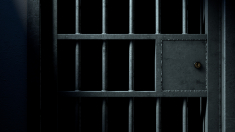Thirty-five years ago this month, the Centers for Disease Control and Prevention published the first report of the disease that would later be known as AIDS. Back then, in 1981, I was 25, newly out and deeply in love. My doctor had discovered that I had swollen lymph nodes and had recently read an article about gay men with this symptom and a new disease then called GRID, gay-related immune deficiency. But I wasn’t worried: That was a gay white man’s disease on the coasts – New York and San Francisco. It was a disease that struck guys who partied hard and had lots and lots of sexual partners. I didn’t think it had anything to do with me, living with Chris in Chicago.
But several years later, after Chris had died, along with dozens of other friends – and I’d been given a death sentence several times — I understood just how wrong I was.
As the AIDS epidemic turns 35, I celebrate my 60th birthday, knowing that I wasn’t supposed to survive. I’ve lived with HIV for most of my life, and never expected to make it to 30, much less 60. Eventually I have come to understand that the only way to save my life and the lives of those I love has been to get involved aggressively in activism and policy work to fight this disease and advocate for health care in general.
We’re at a decisive moment in the HIV/AIDS epidemic. The remarkable advances that we’ve made in the past decade have given us diagnostic, surveillance, treatment and prevention tools we never could have imagined. But every year 50,000 Americans contract the virus – nearly half of them black — and thousands still die from the disease.
Now that I’ve made my 60th trip around the sun in a world where HIV/AIDS has taken hold and won’t let go, I want to use my past as a motivational tool, to protect our future. As I remember the most difficult days of the epidemic and reflect on how far we’ve come, I urge you to also understand how close we are to turning the tide – for good.
My Journey
I came out in 1980. I was engaged to be married to my college sweetheart, and then I met a man named Chris Brownlie. Everything changed. I would call it love at first sight, if there were such a thing. The week after I met him, I gave my mother the book “Loving Someone Gay.” Within a month, I had broken up with my fiancée, and Chris and I moved in together.
Our time together was short-lived. By 1986 Chris had been diagnosed with AIDS and was very sick. We assumed I had contracted the virus as well, and my diagnosis was confirmed in 1987. At that point, Chris and I and most of our friends were living day by day, sometimes minute by minute, trying not to die. We were using a kind of arithmetic of survival: If I don’t die today, then I’ll deal with the pneumocystis attack that’s preventing you from breathing. If I’m alive the day after we can cope with the fact that you may be going blind.
In 1989, Chris passed away in my arms. I didn’t have time, and I didn’t want to process my grief. Things were so catastrophic that I felt like if I let myself understand the depth of what was going on, I would never, ever come out of it. For me, the solution was to work. In 1993 I became director of policy and planning for AIDS Project Los Angeles and also the AIDS coordinator for the city of L.A. My goal was to be as exhausted as possible at the end of each day, so I would fall into bed and be too tired to dream.
In those days, we didn’t think the plague would go on for so long—maybe a few months, a year. I thought, “The government will fix this. They aren’t going to just let us die.” But eventually we all realized no, they are; they aren’t sending the boats back for us. So I threw myself into fighting AIDS.
Soon, it became obvious that I couldn’t keep up that pace. In 1996, I contracted pneumocystis pneumonia and was given less than 24 hours to live. I was very weak, and could barely breathe. I was in the hospital, in intensive care, a tube down my throat. My blood count was dangerously low, and my T cells had dropped to nearly 0.
But then something miraculous happened. The doctors started me on protease inhibitors, the new drug “cocktail” that had been approved for treating AIDS a few months earlier. That medication saved my life – and went on to make the disease “manageable” instead of deadly for millions of others.
But not for the vast majority of Black people. For all the talk about the epidemic being over, for most African-Americans it was as if the cocktails didn’t exist. Yes, there were improvements, but the degree of change in Black communities relative to white communities was striking and shocking. In fact, 1996 the year AIDS “ended,” Blacks accounted for a larger proportion of AIDS cases (41%) than whites for the first time since the start of the epidemic.
Making a Difference
I founded the Black AIDS Institute in 1999 because I was terrified that Black communities were being left behind. We were not getting information about prevention and treatment, and no one was focusing on the unique determinants of health that impact our communities. I wanted to create a space that looked at the disease through a Black lens and where the focus was squarely on us – where we mattered.
And we have made progress. Black America came together to address HIV/AIDS in our communities. Whereas in the first 15 years, there was little effort to confront the disease, today almost all of the major Black civil rights organizations have an AIDS plan and/or a national HIV/AIDS coordinator. Politicians, media organizations, celebrities and churches stepped up to talk about the disease and how to fight it. And individuals took responsibility for their own health through testing and treatment and began to care for themselves and their loved ones.
But it is not over. African Americans remain the racial/ethnic group most affected by HIV in the United States. The latest statistics note that 44 percent of new HIV diagnosis are among African Americans though we comprise only 12 percent of the population. And according to new government data, if current rates persist, one out of every two Black men who have sex with men will become infected with HIV over their lifetimes. The disease has put down roots in the South, which has the least resources but the highest stigma.
Where to go from here
Still, we can protect our future; ending HIV may not be easy, but it is simple.
1. Know your status. That should be the starting point for everyone.
2. Provide treatment for people who are HIV positive. Treatment works two ways: First, it stops the sickness and then dying of those who are living with the virus. Second, treatment functions as prevention; you can’t get infected by someone who can’t transmit the virus.
3. We must make sure that those who are at risk of being infected have the prevention tools they need. These include: condoms; abstinence for those for whom it makes sense; and biomedical interventions like PrEP, the medication that stops the spread of the virus.
We have the power to end the AIDS epidemic. The tragedy will be if we can do it, but don’t.
As told to Linda Villarosa, who runs the journalism program at City College in Harlem and writes frequently about health and social issues. You can follow her on Twitter.
This article is a collaboration between EBONY.com and the Black AIDS Institute to raise awareness about HIV/AIDS in the Black community. Read our previous articles here.





